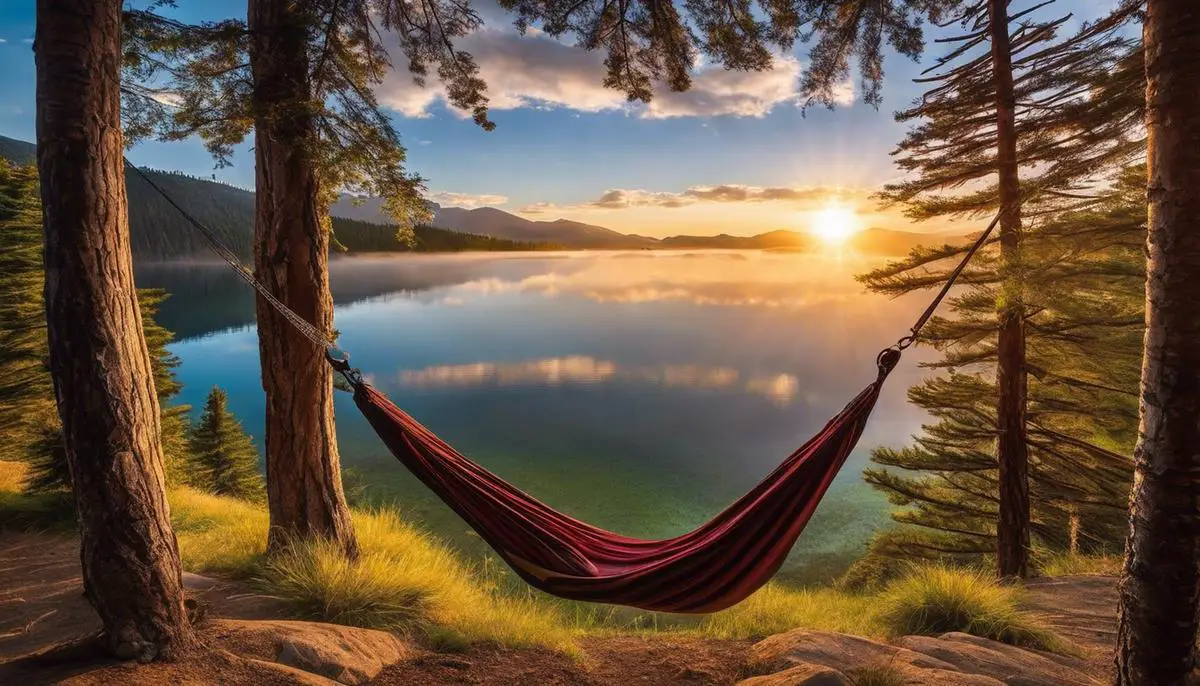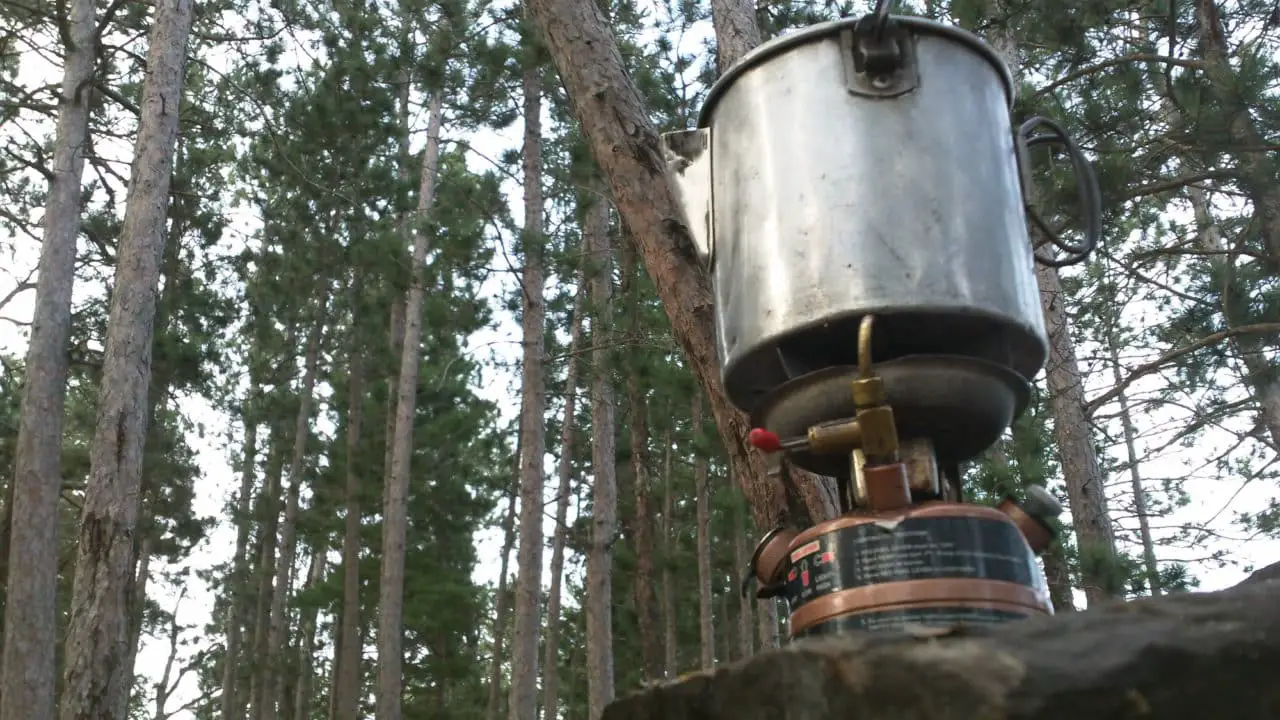Embarking on a hiking adventure offers the promise of experiencing nature’s breathtaking vistas, the wilderness’s tranquility, and the trail’s thrill. But as night falls and the stars begin to pepper the sky, the need for a safe and comfortable resting place becomes paramount. Enter the versatile hiking hammock: a lightweight, compactable haven for the weary hiker. Whether you’re a novice explorer or a seasoned wanderer, understanding the nuances of hiking hammocks is essential to maximize your outdoor experience. From the subtle differences between parachute nylon and ultra-light hammocks to the snug embrace of a single versus a generous double hammock, this guide will navigate you through the key aspects to consider, ensuring your slumber is suspended perfectly with nature.
Table of Contents
Choosing Your Hiking Hammock Type: A Buyer’s Guide

Ah, the call of the wilderness! There’s nothing quite like answering that call with the assurance of a good night’s sleep aloft in the comforting embrace of a hiking hammock. If you’re new to hammock camping or looking to upgrade your hang, you’re in luck! The world of hiking hammocks is diverse and innovative, offering the perfect perch for any adventurer.
1. Parachute Nylon Hammocks
A staple in the hiking community, parachute nylon hammocks are beloved for their durability and comfort. These hammocks are made from high-strength nylon fabric — the same stuff skydivers trust their lives to! Depending on the design, they’re incredibly robust and can accommodate one or two people. The material’s slight stretch means your body won’t feel like a board after a night’s sleep.
2. Ultra-light Hammocks
For the long-distance backpacker counting every ounce, ultra-light hammocks are a dream. Crafted from lightweight materials like ripstop nylon or polyester, these hammocks are designed to minimize trail weight without sacrificing strength. They often come with lightweight straps and carabiners, ensuring your pack remains featherlight.
3. Expedition Hammocks
When the going gets tough, an expedition hammock gets going. Designed for the most rugged conditions, expedition hammocks often feature built-in bug nets and sometimes even rain flies. They are made with more robust fabrics and have additional storage options for gear. If you’re venturing into the wild with unpredictable elements, an expedition hammock is your fortress among the trees.
4. Hammock Tents
Blending the line between hammock and tent, these hybrids provide the off-ground sleeping experience with more traditional tent features. Hammock tents have a rain fly, bug net, and even a floor for storing gear beneath you as you sleep. They offer more privacy and protection but are bulkier than your average hammock.
5. Bridge Hammocks
If the banana shape of standard hammocks doesn’t rock your boat, bridge hammocks might just do the trick. With a flat-lay design and spreader bars at both ends, these hammocks provide a more mattress-like sleeping surface. They’re particularly suited to back sleepers and those who may feel claustrophobic in conventional hammocks.
6. Inflatable Hammocks
Yes, you read that right — inflatable hammocks are a thing! These don’t hang between trees but rather inflate to provide a lounging experience on the ground. They’re perfect for rest stops on the trail or when trees are sparse. Not quite for overnight sleeping, but certainly a unique take on ‘hammocking.’
Remember, no matter which type of hiking hammock you choose, the most important factor is how it fits your personal needs and the nature of your adventures. So get out there, find your perfect hang, and remember, the best hammock is the one that lets you rest as hard as you hike.
Essential Hammock Features for Every Hiker

Hitting the trails with a hiking hammock in your pack changes the game for outdoor enthusiasts. It’s about marrying the love for trekking with the bliss of a suspended snooze in nature. But seasoned hammock hikers know that a superior hammock brings more than just leisure—it offers a haven in the wilderness. Let’s swing right into the nuances that separate an ordinary hammock from a high-quality trekker’s dream.
Weight Capacity and Size
One key aspect often overlooked is the weight capacity and size. A high-quality hiking hammock should be built to support more than just the hiker’s weight. It should accommodate additional gear that might need to be secured overnight. Moreover, dimensions are crucial—longer and wider hammocks will allow for a more comfortable diagonal lay, crucial for a restful sleep after a long hike.
Suspension System
A robust suspension system is the hammock’s backbone. Look for one with tree-friendly straps that are not only wide enough to protect the bark but also feature multiple attachment points. These points allow for easy adjustments to achieve the perfect hang angle, generally accepted to be around 30 degrees.
Durability Against the Elements
Durability in face of the elements is what will see a hammock through many adventures. Hiking hammocks must boast resistance to UV rays, mildew, and the inevitable encounter with pesky insects. Some high-quality hammocks come with built-in bug nets and/or attachable rain tarps. These accessories should be made from materials that can withstand tears and rips while being as lightweight as possible.
Ease of Setup and Takedown
Ease of setup and takedown is a must when daylight is precious, or exhaustion hits. A hammock with a simple, intuitive design can make the difference between resting or wrestling with gear as the sun sets. Carabiners, for instance, should be of high-strength but lightweight metal, facilitating secure and swift connections.
Breathability and Ventilation
No one enjoys waking up in a sweaty cocoon or shivering in chilly air currents. A proper hiking hammock will strike a balance between insulating against colder temperatures and offering enough ventilation to prevent condensation and overheating in varying climates.
Personalization Options
Lastly, the ability to personalize the hammock experience should not be underestimated. High-quality hammocks often come with options for under quilts, over quilts, and sleeves for sleeping pads, tailored to the hiker’s specific needs. These small additions can greatly enhance comfort and protection.
Remember, the right hiking hammock is a loyal companion on the trails. It provides a cozy roost and the necessary resilience to face nature’s mood swings. Now, isn’t that a comforting thought to hang onto as you venture into the embrace of the wild?
Step-by-Step Hammock Setup and Maintenance Tips

Setting up and maintaining a hiking hammock is a journey of comfort and convenience that transforms any camping trip into a cozy affair. After selecting the perfect type among the myriad options like parachute nylon hammocks or ultralight variants, it’s critical to focus on the setup and long-term care to ensure a hammock’s longevity.
Selecting the Right Location
The quest for the perfect spot is paramount. Look for sturdy trees that are about 12 to 15 feet apart, ensuring they are alive and well with no signs of disease or weakness. The environmental impact is important; avoid trees with thin bark by using wide, tree-friendly straps.
Hanging at the Perfect Angle
Now, it’s a game of angles. The ideal hanging angle is approximately 30 degrees from horizontal. This creates a comfortable sag that cradles the body without excess pressure. Using a hammock suspension system, adjust the straps to achieve the ‘golden angle’ which will also prevent the straps from snapping under tension.
Lay Diagonally
One might think lying straight as an arrow is best, but the sweet spot is actually diagonal. This position provides a flatter lay, reducing strain on the back and allowing for a more restful sleep. This technique will also prevent the hammock from stretching out unevenly over time.
Protect and Insulate
Mother Nature can be unforgiving, so protection is essential. A rain tarp above the hammock provides shelter from the elements. For cold weather, an underquilt prevents loss of body heat to the cold air beneath. Opting for a hammock-specific tarp or quilt, rather than makeshift solutions, usually results in better fit and protection.
Don’t Forget to Clean
After each adventure, it’s best to clean your hammock. Most can be gently washed in cold water with a mild soap and then air-dried. Never use bleach and avoid ironing, which can degrade the fabric and reduce its weight-bearing capability.
Store It Right
When the journey ends, storage is critical. Ensure the hammock is dry before packing it to avoid mold and mildew. Loosely fold or roll and store in a breathable bag, away from direct sunlight and in a dry place. This avoids fabric breakdown and prepares the hammock for the next wilderness escape.
Regular Inspections
Before each hang, a quick safety check goes a long way. Inspect for rips, holes, and weak spots, checking straps and carabiners for wear and tear. Addressing small issues before they escalate ensures safety and extends the hammock’s life span.
Embracing these setup and maintenance steps means the hammock will be a reliable companion on many future treks. Whether perched above a babbling brook or in a quiet forest clearing, the hammock experience offers an unparalleled blend of immersion in nature and suspended serenity.
Hiking Hammock Recommendations

Swaying gently between two sturdy trees, a good hammock is more than just a spot to rest; it’s the outdoor enthusiast’s best friend, offering a comfy haven after a long day’s hike. For those in the know, it’s not just picking the best fabric for an exceptional hammocking experience but also the little details and features that can make a world of difference. Let’s hang into more specifics, shall we?
Spreader Bar Hammocks
A step away from the conventional cocoon, spreader bar hammocks stand out with their open design, thanks to the bars at each end that stretch out the fabric. This hammock provides a flatter lay, making it a preferred option for back sleepers and those who enjoy basking under the sun without being shrouded by fabric walls. There’s nothing quite like it when perched up high and enjoying a panoramic view.
Hammock Underquilts
For the committed hammock, cold weather is merely a detail, and that’s where hammock under quilts shine. By adding a layer beneath, these quilts retain heat and prevent the cold night air from turning your dream hang into a shiver-fest. Coupled with a compatible sleeping bag, one can enjoy the stars in toasty comfort even when the temperature dips.
Eco-friendly Materials
There’s a growing trend among hikers to choose gear that aligns with eco-conscious values. Eco-friendly hammocks crafted from recycled materials or sustainable practices offer peace of mind and a hearty nod to Mother Nature. These materials are often just as durable and comfortable as their traditional counterparts, ensuring that your leisure doesn’t come at an environmental cost.
All-in-one Hammock Systems
All-in-one systems are a game changer for those who want a worry-free package. These kits bundle everything you need: hammocks, straps, carabiners, and sometimes even tarps and bug nets. They’re the perfect choice for newcomers or anyone who values convenience and matched components that ensure compatibility and ease of use.
Personal Flare
In a sea of greens and grays, sometimes a pop of color or a unique pattern is just what a hammocker craves. Customizable options aren’t just for aesthetics; they help your hammock stand distinct at crowded sites or in the vast wilderness. Some brands even offer personalization for that special touch.
Accessorize Wisely
From attachable side pockets for organizing gear to tablet holders for a movie night in the wild, accessories can level up the hammock experience. These add-ons often reflect personal style and practicality, ensuring that essentials are within arm’s reach and that relaxation is paramount.
Video: Camping Hammocks – My Top Choices. The Hammocks I Use for Canoe Trips, Hiking and Bikepacking Trips.
FAQs on Hiking Hammocks
What are the key features to look for in a hiking hammock?
Look for durability, lightweight materials, and ease of setup. Consider features like integrated bug nets and weather resistance for added comfort.
How do I choose the right size and type of hammock?
Consider the type of hiking you do. Ultralight hammocks are great for long distances, while expedition hammocks offer more durability and protection.
How do I properly maintain and store my hiking hammock?
Clean your hammock regularly and store it dry. Check for any damage before and after trips to ensure safety and longevity.
Final Thoughts About Hiking Hammocks

Through the bending branches and beyond the setting sun, the hiking hammock remains a steadfast companion to adventurers seeking solace in embracing the great outdoors. With the knowledge of the suitable hammock types, features, setup, and care, your outdoor escapades can be transformed into restful retreats amidst the call of the wild. May the recommendations lead you to the perfect aerial abode that withstands the elements and serves as your floating castle under a canopy of stars. Let the journey be light, the setup effortless, and the sleep rejuvenating as you sway gently in your hammock, dreaming of the trails to be conquered come dawn.



